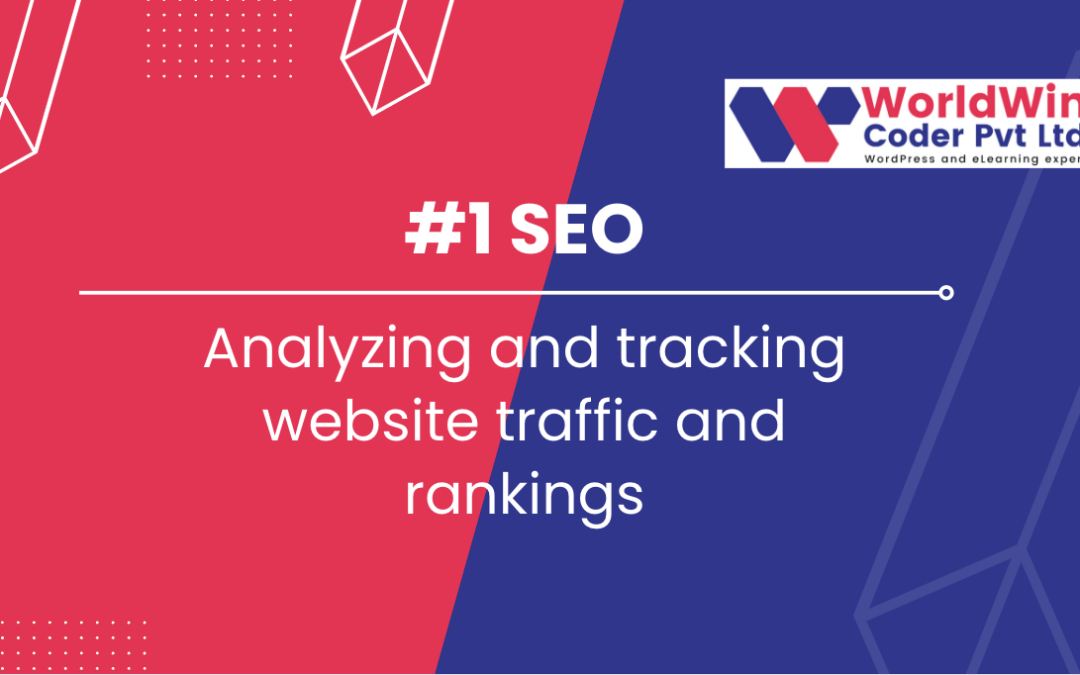
by Vishavjeet | Feb 6, 2023 | blog
Website traffic and rankings are crucial indicators of a website’s performance and success. In this blog post, we will discuss various methods of analyzing and tracking website traffic and rankings to gain valuable insights and make data-driven decisions.
First, let’s understand the different types of website traffic. There are two main types of website traffic: organic traffic and referral traffic. Organic traffic refers to visitors who find your website through search engines such as Google, Bing, or Yahoo. Referral traffic refers to visitors who come to your website from other websites, such as social media or other online platforms.
To analyze website traffic, one can use various tools such as Google Analytics, which provides detailed insights into website traffic, including the number of visitors, their location, the pages they visit, and how long they stay on your website. Google Analytics also allows you to set up goals, such as tracking the number of visitors who complete a specific action on your website, such as making a purchase or filling out a form.
Another tool that can be used to analyze website traffic is Google Search Console, which provides insights into how your website is performing in search engine results pages (SERPs). It also allows you to track the number of clicks, impressions, and click-through rate (CTR) for specific keywords. This information can be used to optimize your website’s content and improve its search engine ranking.
To track website rankings, you can use tools such as Ahrefs, SEMrush, or Moz. These tools provide data on the keywords that your website is ranking for, as well as the position of your website in the SERPs for those keywords. This information can be used to identify opportunities for improving your website’s search engine ranking.
In conclusion, analyzing and tracking website traffic and rankings can provide valuable insights into the performance of a website and help make data-driven decisions. By using tools such as Google Analytics, Google Search Console, Ahrefs, SEMrush, or Moz, you can gain a better understanding of your website’s visitors, the keywords that drive traffic to your website, and your website’s search engine ranking. With this information, you can optimize your website’s content and improve its performance

by Vishavjeet | Feb 6, 2023 | blog
Technical SEO optimization is the process of ensuring that a website is technically sound and properly optimized for search engines. This includes a wide range of techniques that help to improve the visibility and ranking of a website in search engine results pages (SERPs). In this blog post, we will discuss some advanced technical SEO optimization techniques that can help to improve your website’s visibility and ranking in search engines.
- Optimize your website’s structure and architecture
The structure and architecture of your website play a crucial role in how search engines crawl and index your website. A well-structured website makes it easier for search engines to understand the content and relationships between pages.
To optimize your website’s structure and architecture, ensure that your website has a clear hierarchy, with the most important pages at the top and less important pages at the bottom. Use breadcrumb navigation to help search engines understand the relationships between pages and use header tags (H1, H2, H3) to indicate the hierarchy of content on your pages.
- Use schema markup
Schema markup is a way of providing additional information to search engines about your website’s content. This information can include things like product prices, reviews, and ratings, which can help to improve your website’s visibility in search engine results pages.
To use schema markup, you will need to add structured data to your website’s HTML code. This can be done manually or through a plugin, and there are a number of different types of schema markup that can be used, including product, event, and organization schema.
- Optimize your website’s speed and performance
Website speed and performance are important factors that can affect your website’s visibility and ranking in search engines. A slow-loading website can lead to a poor user experience, which can lead to a higher bounce rate and lower search engine rankings.
To optimize your website’s speed and performance, you should use tools like Google PageSpeed Insights and GTmetrix to identify areas for improvement. This can include things like compressing images, minifying code, and using a content delivery network (CDN).
- Optimize your website for mobile devices
With the increasing use of mobile devices to access the internet, it is important to ensure that your website is optimized for mobile devices. This includes things like using a responsive design, compressing images, and using a mobile-friendly layout.
To optimize your website for mobile devices, you can use tools like Google’s Mobile-Friendly Test and the Mobile Usability report in Google Search Console. These tools will help you identify any issues with your website’s mobile design and provide recommendations for improvement.
- Use internal linking
Internal linking is the process of linking to other pages on your website from within your content. This helps to improve the visibility and ranking of your website by making it easier for search engines to understand the relationships between pages.
To use internal linking effectively, ensure that your internal links are relevant and useful to your users. Use descriptive anchor text and link to relevant pages on your website.
In conclusion, technical SEO optimization is a complex and ever-evolving process. By using these advanced techniques, you can help to improve your website’s visibility and ranking in search engines. However, it is important to remember that SEO is an ongoing process, and you should regularly monitor and update your website to ensure that it is up to date with the latest best practices.
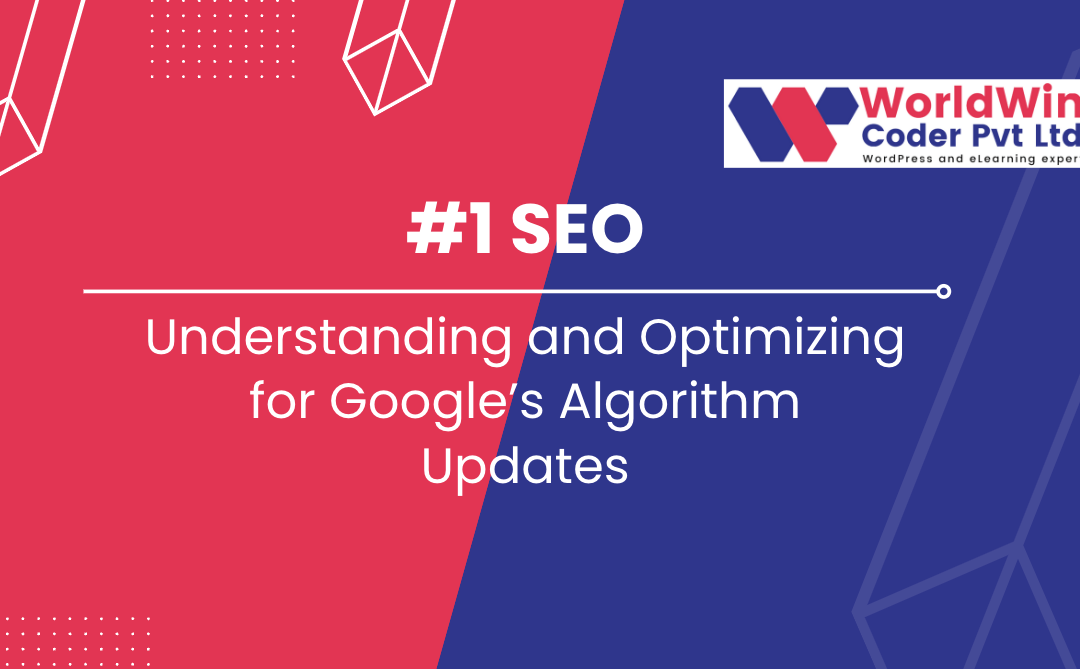
by Vishavjeet | Feb 6, 2023 | blog
Google’s algorithm updates are a constant force in the world of search engine optimization (SEO). These updates can make or break a website’s visibility and search rankings, so it’s important for businesses and digital marketers to stay up-to-date on the latest changes and understand how to optimize for them. In this blog post, we’ll take a closer look at some of the most recent algorithm updates and explore how to optimize your website for them.
First, let’s define what an algorithm update is. Google’s algorithm is the set of rules and regulations that the company uses to determine the relevance and authority of a website. These rules are constantly being updated to improve the user experience and ensure that the most relevant and trustworthy websites are appearing at the top of the search results.
One of the most recent algorithm updates is the “Page Experience Update,” which was announced in May 2021 and rolled out in June 2021. This update focuses on the user experience of a website, including the loading speed, responsiveness, and mobile-friendliness of a website. Google wants to ensure that users are finding websites that are easy to navigate and interact with, so websites that don’t meet these standards may see a drop in search rankings.
To optimize for the Page Experience Update, businesses and digital marketers should ensure that their website is fast-loading, responsive, and mobile-friendly. This can be achieved by implementing responsive design, optimizing images and videos, and using a content delivery network (CDN) to improve loading speeds. Additionally, businesses should make sure that their website is easy to navigate and has a clean and simple design.
Another recent algorithm update is the “Core Web Vitals Update,” which was announced in November 2020 and rolled out in May 2021. This update focuses on the technical aspects of a website, including the loading speed, interactivity, and visual stability of a website. Google wants to ensure that users are finding websites that are easy to interact with and don’t have any visual disruptions.
To optimize for the Core Web Vitals Update, businesses and digital marketers should focus on improving the loading speed, interactivity, and visual stability of their website. This can be achieved by optimizing images, videos, and code, as well as implementing lazy loading and reducing the number of redirects. Additionally, businesses should make sure that their website is easy to navigate and has a clean and simple design.
Another important algorithm update is the “BERT Update,” which was announced in October 2019 and rolled out in December 2019. This update focuses on natural language processing and helps Google understand the intent behind a user’s search query. This means that Google will be better able to match a user’s search query with the most relevant website, and businesses with well-written and informative content will see an increase in search rankings.
To optimize for the BERT Update, businesses and digital marketers should focus on creating high-quality, informative content that is relevant to their target audience. This can be achieved by researching keywords, using long-tail keywords, and incorporating natural language into their content. Additionally, businesses should make sure that their website is easy to navigate and has a clean and simple design.
In conclusion, Google’s algorithm updates are an important aspect of SEO and can make or break a website’s visibility and search rankings. By understanding and optimizing for these updates, businesses and digital marketers can ensure that their website is visible to their target audience and that they are appearing at the top of the search results. By focusing on the user experience, technical aspects, and natural language processing, businesses can improve their search rankings and drive more traffic to their website.
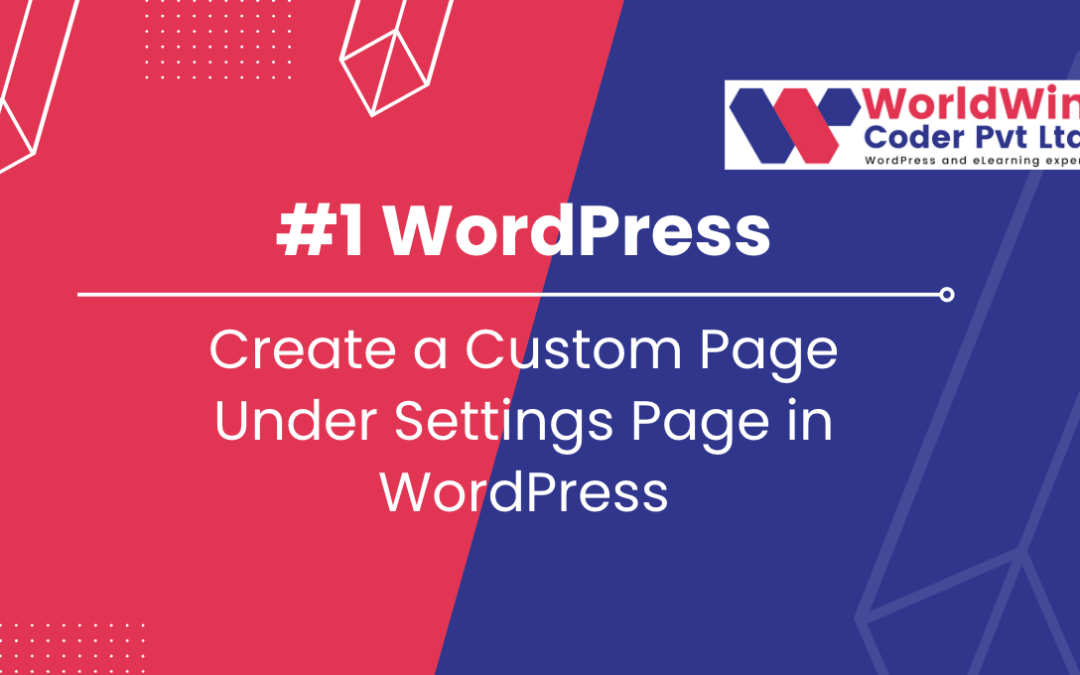
by Vishavjeet | Feb 5, 2023 | blog, WordPress
WordPress setting page is a dedicated page within the WordPress admin area that allows users to manage and configure various settings for their website. It provides a user-friendly interface for making changes to the website’s features, appearance, and functionality. The setting page enables users to control various aspects of their website such as security settings, theme options, plugin options, and other settings. It is a central hub for all the configurations and options for a WordPress website, making it easier for users to manage their website without having to modify any code. The custom settings page in WordPress helps users to keep their website up to date, secure, and functional, without having to rely on technical expertise.
How To add a setting page in WordPress for “My Custom Page,” follow these steps:
- Create a new PHP file for the setting page: In the WordPress theme folder, create a new PHP file. You can name it “my-custom-page-settings.php.”
- Add the WordPress action to the new PHP file: In the new file, add the following code to register the setting page with WordPress:
add_action('admin_menu', 'my_custom_page_settings');
function my_custom_page_settings() {
add_options_page(
'My Custom Page Settings',
'My Custom Page',
'manage_options',
'my-custom-page-settings',
'my_custom_page_settings_render'
);
}
- Create the setting page content: In the new file, add the following function to render the content of the setting page:
function my_custom_page_settings_render() {
?>
<div class="wrap">
<h1>My Custom Page Settings</h1>
<form method="post" action="options.php">
<?php
settings_fields('my_custom_page_settings_group');
do_settings_sections('my-custom-page-settings');
submit_button();
?>
</form>
</div>
<?php
}
- Create the form fields: In the same file, add the following code to create the form fields for the setting page:
add_action('admin_init', 'my_custom_page_settings_fields');
function my_custom_page_settings_fields() {
register_setting('my_custom_page_settings_group', 'my_custom_page_title');
add_settings_section(
'my_custom_page_section',
'My Custom Page Settings',
'my_custom_page_section_render',
'my-custom-page-settings'
);
add_settings_field(
'my_custom_page_title',
'Page Title',
'my_custom_page_title_render',
'my-custom-page-settings',
'my_custom_page_section'
);
}
- Render the form fields: In the same file, add the following code to render the form fields:
function my_custom_page_section_render() {
echo 'Enter the details for the custom page:';
}
function my_custom_page_title_render() {
$options = get_option('my_custom_page_title');
?>
<input type="text" name="my_custom_page_title" value="<?php echo esc_attr($options); ?>" />
<?php
}
- Load the setting page: Finally, include the new PHP file in your functions.php file or any other relevant file to load the setting page in the WordPress admin area.You have now successfully added a setting page in WordPress for “My Custom Page.” You can now access the setting page from the WordPress admin area and customize the page title.
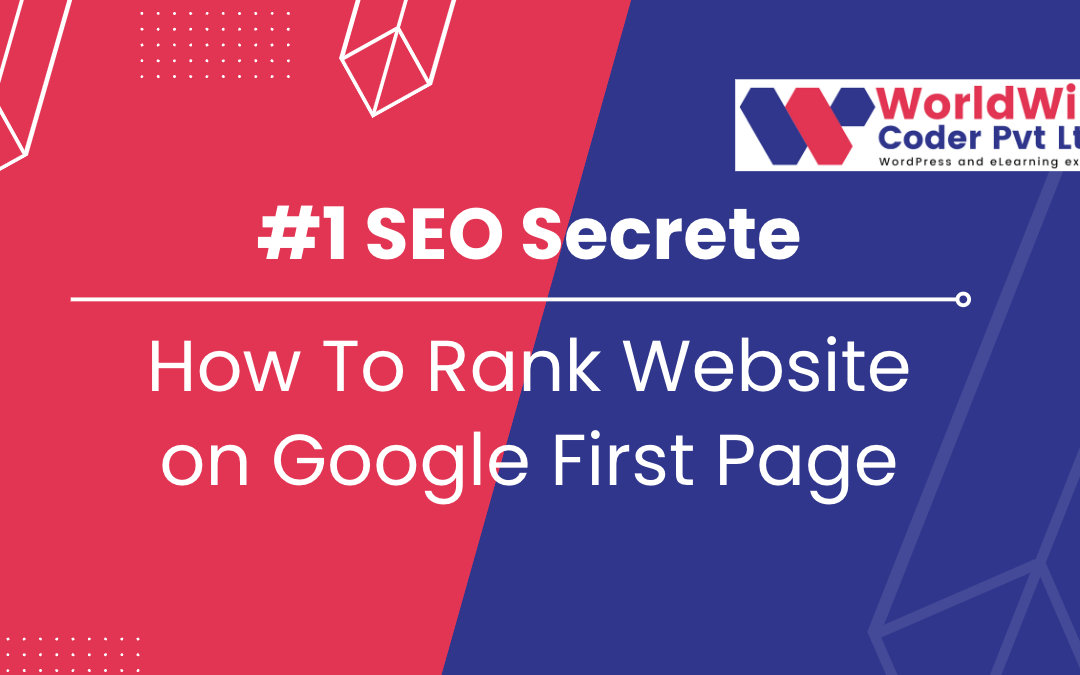
by Vishavjeet | Jan 14, 2023 | blog, Digital Marketing
Rank website on Google first page is crucial for any business or individual looking to establish an online presence. With over 3.5 billion searches made every day on Google, appearing on the first page is a surefire way to increase visibility and drive traffic to your website. One of the most important things to understand when trying to rank website on Google first page is that there is no one-size-fits-all approach. However, there are several key factors that will influence your website’s ranking.
On-Page Optimization
- On-page optimization is the process of optimizing the content and structure of your website to make it more appealing to search engines. This includes using relevant keywords in the title tag, meta description, and throughout the content of your website.
- In addition to using relevant keywords, it is also important to make sure your website has high-quality content that is both informative and engaging. This will not only help your website rank higher in search results, but it will also keep visitors engaged and coming back for more.
On-page technical SEO
- On-page technical SEO is the process of optimizing the website’s code to make it more search engine friendly. This includes optimizing the website’s meta tags, header tags, images and website’s load time.
- Make sure your website is mobile-friendly and easy to navigate. Use schema markup, this will help search engines to understand the website’s content better.
What’s Your Website SEO Challenge Right Now?
Let’s Talk
Off-Page Optimization
- Off-page optimization is the process of building high-quality backlinks to your website from other relevant and authoritative websites. Backlinks act as a vote of confidence for your website, signaling to search engines that other websites consider your content valuable.
- The more high-quality backlinks your website has, the more likely it is to rank higher in search results. When building backlinks, it is important to focus on quality over quantity. A few high-quality backlinks from relevant and authoritative websites will be much more beneficial than a large number of low-quality backlinks.
Optimizing for User Experience
- In addition to on-page and off-page optimization, it is also important to focus on optimizing for user experience. This means making sure your website is easy to navigate, loads quickly, and is mobile-friendly.
- Search engines are increasingly placing a greater emphasis on user experience, so it is important to make sure your website is designed with the user in mind.
What’s Your Website SEO Challenge Right Now?
Let’s Talk
Use Google Search Console
- Google Search Console is a free tool offered by Google that allows you to monitor the performance of your website in Google search. With this tool, you can see how often your website is appearing in search results, which keywords are driving traffic to your website, and which pages are receiving the most clicks.
- By using this tool, you can identify any issues with your website, such as crawl errors or broken links, and take action to fix them. This can help to improve your website’s ranking in search results.
Use Google Analytics
- Google Analytics is a free tool that allows you to track the traffic and engagement metrics of your website. With this tool, you can see how many people are visiting your website, where they are coming from, and what pages they are viewing.
- By using this tool, you can identify which pages on your website are performing well and which are not. This can help you to optimize your website for better engagement and conversion rates.
Optimize for Local SEO
- If you want to target local keywords, make sure your website is optimized for local SEO. This means including your business name, address, and phone number (NAP) on your website, as well as creating a Google My Business listing and ensuring that all of your business’s information is accurate and consistent across the web.
Finally, Optimize for Featured Snippets, try to target the featured snippet for your target keyword, this will help you to grab the top spot on google.
It’s important to remember that SEO is a continuous process and it may take time to see the results, and it’s also important to keep in mind that the algorithms that determine search rankings are constantly changing, so what works today may not work tomorrow.
What’s Your Website SEO Challenge Right Now?
Let’s Talk
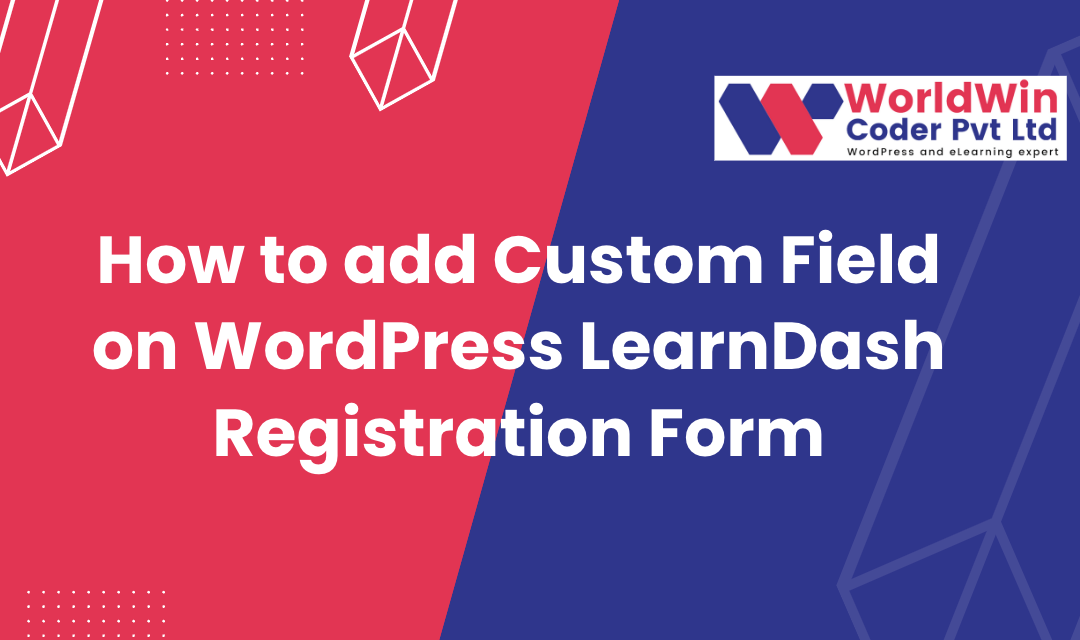
by Vishavjeet | Jan 14, 2023 | blog, WordPress
LearnDash is a popular WordPress plugin that allows you to create and manage online courses. One of the features of LearnDash is the ability to add custom fields to the registration form. Custom fields allow you to collect additional information from your users during registration, such as their phone number or company name. LearnDash is a highly favored WordPress plugin that provides you with the facility to concoct and govern online courses. Among its multitude of traits, one such characteristic is the provision of adding personalized fields to the registration form. Customizable fields procure the opportunity to amass supplementary information from clients during the registration process, such as their contact number or organization title. This allows businesses to gather important data that can be used for targeted marketing campaigns or to better understand their customer base. Customizable fields also provide a more personalized registration experience for customers, as they can input information that is relevant to them.
By allowing clients to input their own information, customizable fields also reduce errors and ensure that the information collected is accurate. Additionally, businesses can use customizable fields to collect feedback from customers or to provide additional customization options, such as preferred payment methods or shipping options.
Overall, customizable fields provide a valuable tool for businesses to gather information, improve their marketing efforts, and provide a better user experience for their customers.
Here is a step-by-step guide on how to add custom fields to the LearnDash registration form:
function my_ld_custom_fields() {
// Create a new custom field : Name
$custom_fields[] = array(
'name' => 'your_name',
'label' => 'Your Name',
'type' => 'text',
'required' => true
);
// Create a new custom field : phone_number
$custom_fields[] = array(
'name' => 'phone_number',
'label' => 'Phone Number',
'type' => 'text',
'required' => true
);
// Create a new custom field : Website Details
$custom_fields[] = array(
'name' => 'website_details',
'label' => 'Website Details',
'type' => 'text',
'required' => true
);
// Create a new custom field : Education
$custom_fields[] = array(
'name' => 'education',
'label' => 'Education',
'type' => 'text',
'required' => true
);
return $custom_fields;
}
add_filter( 'learndash_registration_custom_fields', 'my_ld_custom_fields' );
What’s your Biggest LearnDash Challenge Right Now?
Let’s Talk





